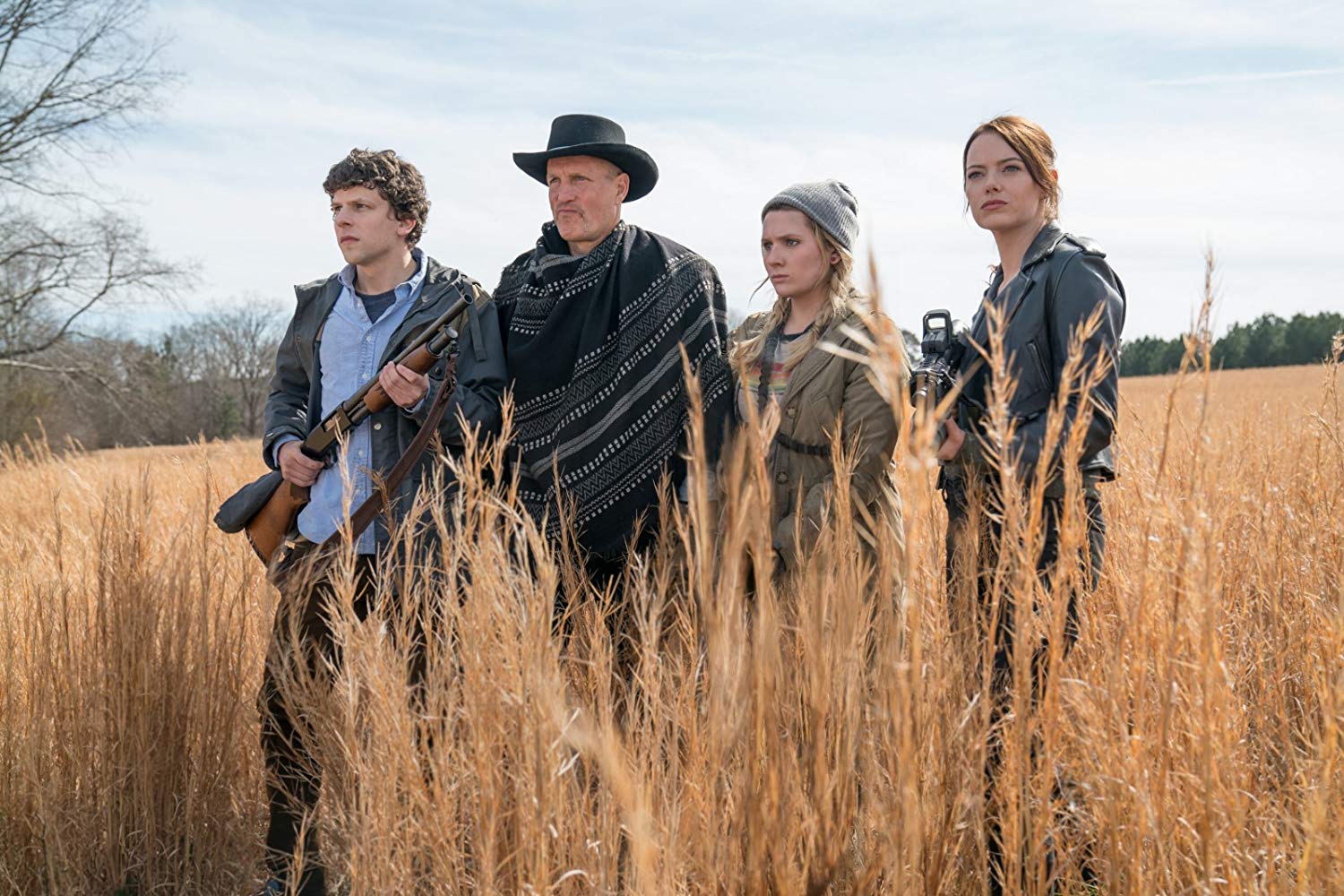
Zombieland: Double Tap is a 2019 film written by Rhett Reese, Paul Wernick, and David Callaham, and directed by Ruben Fleischer. A follow-up to the surprise 2009 hit Zombieland, Double Tap picks up ten years after the events of the first film. Jesse Eisenberg, Woody Harrelson, Emma Stone, and Abigail Breslin all return to reprise their roles.
The first Zombieland followed a lovable band of misfits as they fought zombies in a lighthearted post-apocalyptic romp. Zombieland 2 follows the same basic story and structure as the first. With the same writer and director, talented cast, and formula, Double Tap was destined to be a hit. It performed well enough, debuting at number 2 in the box office. But only 10 days later, it had been pushed to number 4, and audience interest continued to wane in the following weeks.
So what happened? Why did Zombieland: Double Tap fail to make an impression on film-goers in 2019? Is the genre dead, or are there other forces at work? In this deep dive, we will explore the history and evolution of zombies in media, from Night of the Living Dead to Zombieland: Double Tap. And we will discuss how a perfect 2009 zombie movie makes for a disappointing zombie movie in 2019.
People Are the Real Monsters
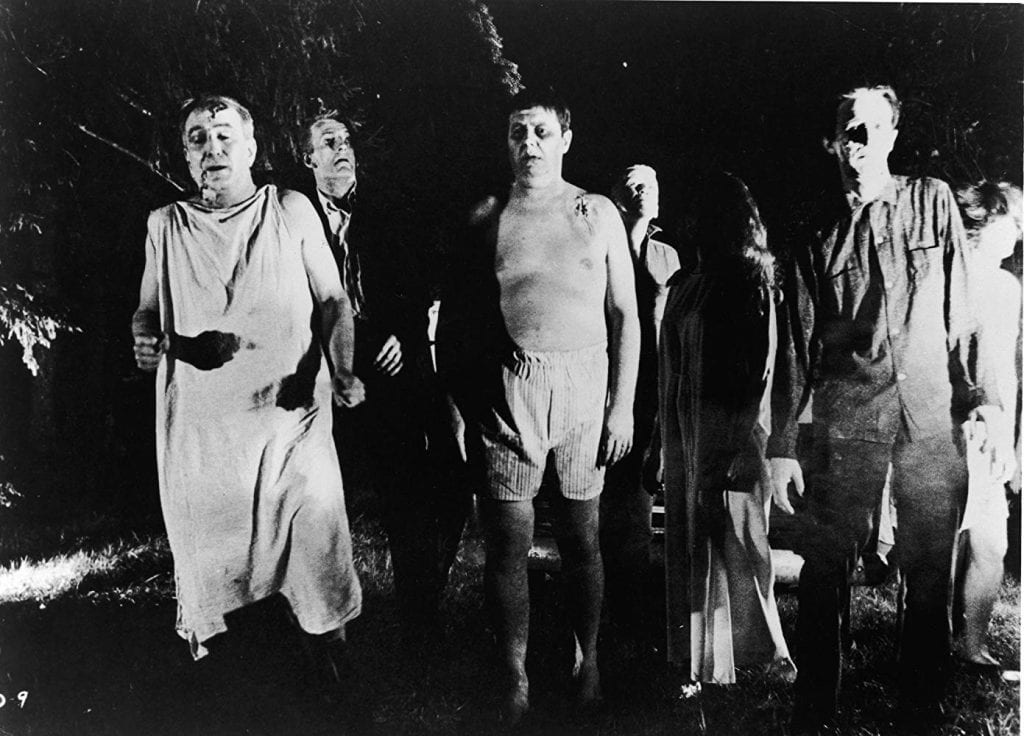
Night of the Living Dead is a 1968 film written and directed by George Romero. In the film, the dead rise from their graves to attack and devour the living. A small group of survivors holes up in a farmhouse near the cemetery and attempts to fend off the undead threat, with tragic results.
Despite its low budget, the movie was groundbreaking in many ways and set the standard for all future zombie movies. Most notably, Night of the Living Dead tackles the issue of racism with a surprising amount of nuance and empathy. The film stars Duane Jones as Ben, the leader of the group. He’s intelligent, kind, capable, and African-American. Every other character is white. Though no one ever explicitly mentions race, the script and performances convey the group’s discomfort with Ben.
The main antagonist, Harry (played by Karl Hardman), clearly believes that he is the rightful hero of the story. And in any other movie, he very well might have been. The genius of Night of the Living Dead is its irony. The group fears and resents Ben, even though he’s the only person capable of keeping them alive. Ben spends the entire movie fighting the zombie threat, but human apathy is far more deadly. The chilling final moments of the film are just as effective in 2019 as they were in 1968.
Night of the Living Dead is largely considered the first modern zombie film. Through (admittedly clunky) news exposition, the movie conveys the rules of a zombie invasion. These rules would become the baseline for all zombie media that followed. While some details have changed throughout the decades, one rule will always remain the same. To kill a zombie, you must destroy the brain. In other words, Rule #2: Double Tap.
Welcome to the Post-Apocalypse
Throughout the next few decades, zombie movies continued to thrive as cult classics. Dawn of the Dead (1978) expanded on the themes of Romero’s first film by adding an antagonistic biker gang. In both of these movies, the zombies are a threat, but human beings are far more sinister. However, Dawn of the Dead added another element to the zombie movie lexicon: the post-apocalypse. With the success of Mad Max a year later, audiences were hungry for post-apocalyptic wastelands, and film producers took notice. Deserted cities and roving raider gangs became a staple of the zombie genre.
Meanwhile, new directors, inspired by Night of the Living Dead, entered the scene. Sam Raimi’s cult hit Evil Dead series portrayed zombies in a new light. While the first was a more faithful homage to George Romero’s classic, Evil Dead 2 and Army of Darkness put a humorous twist on the source material. The star of the Evil Dead series, Bruce Campbell, was a gifted slapstick comedian, and Sam Raimi put his skills to use. Army of Darkness, in particular, leaned more heavily toward comedy than toward horror, framing the post-apocalypse as a thrilling male power fantasy.
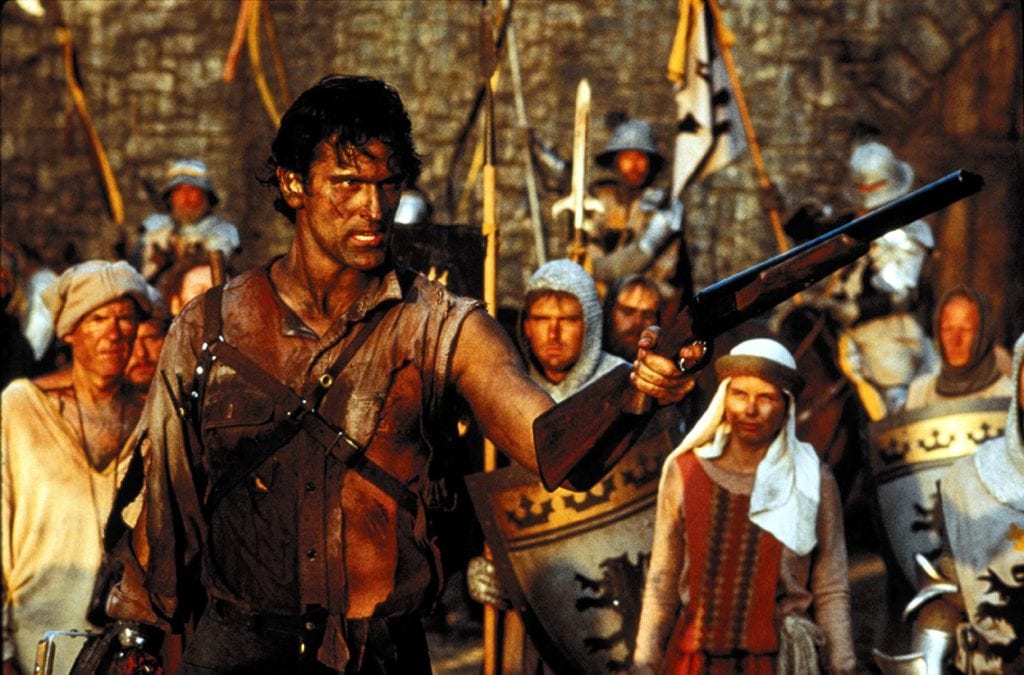
“Alright you Primitive Screwheads, listen up! You see this? This… is my BOOMSTICK! The twelve-gauge double-barreled Remington. S-Mart’s top of the line. You can find this in the sporting goods department. That’s right, this sweet baby was made in Grand Rapids, Michigan. Retails for about $109.95. It’s got a walnut stock, cobalt blue steel, and a hair trigger. That’s right. Shop smart. Shop S-Mart. You got that?”
–Army of Darkness
Thanks to the Evil Dead series, zombies could be more than scary. They could also be funny. For many years, zombie films continued to find cult success, but they failed to connect with wider audiences.
Z Is for Zeitgeist
28 Days Later, released in 2002, marked the opening act of a zombie renaissance. Shot on digital for a reasonable $8 million, this Alex Garland and Danny Boyle-helmed production revitalized the genre. 28 Days Later showcased the emptiness of the post-apocalypse, utilizing long shots of abandoned cities and streets. Contrasting the steady and desolate tone, the zombies were faster, stronger, and full of rage. The post-apocalypse was in.
The Zombie Survival Guide, written by Max Brooks (the son of Mel Brooks), was released in 2003. Set in a fictional alternate reality, The Zombie Survival Guide features humorous tips on how to survive the zombie-infested post-apocalypse. Zombieland clearly drew inspiration from all of the movies that came before it, but the tone can be traced back to this book.
“Humans who believe they have outrun their undead pursuers might do well to remember the story of the tortoise and the hare, adding, of course, that in this instance the hare stands a good chance of being eaten alive.”
–The Zombie Survival Guide
The Zombie Survival Guide’s blend of casual worldbuilding, survival advice, and tongue-in-cheek humor laid the groundwork for Zombieland. But zombie movies were still relegated to cult status. Following the surprise success of 28 Days Later and The Zombie Survival Guide, audiences were finally ready for a mainstream zombie movie.
Dawn of the Dead, a loose remake of the 1978 classic, debuted in 2004. Written by James Gunn and helmed by then unknown director Zack Snyder, Dawn of the Dead was a mid-budget zombie action film. Featuring dark humor and bloody effects, it was mainstream enough to pull in new audiences while maintaining respect for the source material. Dawn of the Dead released to critical and commercial success and paved the way for all zombie media that followed.
Vampires vs. Zombies
It’s impossible to discuss the evolution of zombie culture without addressing the sparkly elephant in the room. Based on the popular book series by Stephenie Meyer, the 2008 film Twilight was an overnight cultural phenomenon. The Twilight series had already gained some notoriety for its portrayal of vampires, as well as criticism for its questionable themes and characters. But the movie unleashed a new, vicious torrent of backlash. To many of the loyal fans of Dracula, Lestat, and their bloodsucking brethren, Twilight wasn’t just a movie. It was an insult.
Beloved leaders in nerd culture vehemently opposed Twilight and all it stood for, and horror fans found themselves in a difficult position. They wanted to enjoy monster movies, but they also wanted to distance themselves from Twilight and its fans. There had to be other monsters, other counter-cultural touchstones, untainted by Bella and the Cullens. The answer was clear: a hard pivot to zombies. Zombie movies weren’t just cult classics; they were safe havens. No one in the world would dream of writing a sincere love story about a zombie. Vampires and werewolves had been un-fanged and de-clawed, but zombies would always be monsters.
With the success of Dawn of the Dead, audiences were ready for a big, boisterous, post-apocalyptic romp. We wanted something loud and sarcastic, something that spoke to our sense of humor, but also our frustration. We wanted the anti-Twilight. Enter Zombieland.
Nut Up or Shut Up
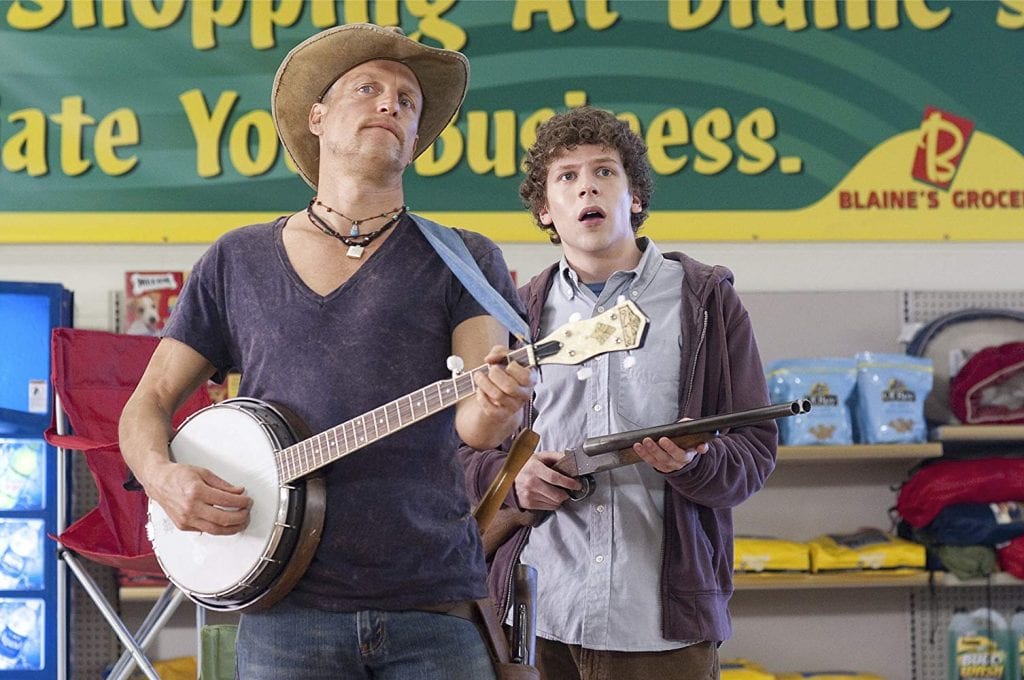
Zombieland is a 2009 film starring Jesse Eisenberg as Columbus, a nerdy college student with a knack for surviving the zombie apocalypse. He teams up with Tallahassee, played by Woody Harrelson, on a quest to find Twinkies and a sense of purpose. They are robbed by two young women named Wichita and Little Rock, who are headed for a safe zone in California. After a few scrapes, the two teams decide to join forces and head for the coast.
Zombieland marks the apex of the zombie renaissance, successfully building off of its predecessors to create something modern. Like 28 Days Later, Zombieland focuses on a rage virus and a post-apocalyptic setting. Like Dawn of the Dead, the pacing is fast, the tone more focused on fun than scares. And of course, Columbus regularly breaks the fourth wall to discuss his rules for survival. These rules are similar to many passages in The Zombie Survival Guide, with Eisenberg’s deadpan delivery effectively mimicking Max Brooks’ sardonic writing style.
Zombie movies, and post-apocalyptic stories in general, tend to reflect cultural fears. For instance, Night of the Living Dead explored racial and nationalistic tensions following the Civil Rights Movement and the Red Scare. But in the 1970’s, Mad Max and Dawn of the Dead marked an age of biker gang dystopias, likely in reaction to the Hell’s Angels.
But what did the end of the world look like in 2009? Borrowing from the power fantasy of Army of Darkness, Zombieland smartly contradicts its bleak setting with cartoon humor and gore. There is no real zombie threat; clowns pose far more of a challenge. This sets it apart from the other zombie media. Where so many of its predecessors focused on fear, Zombieland opts for a hopeful post-apocalypse.
The Beginning of the End
2009 was the year of the zombie. Zombie media was inescapable. In April, an unknown writer named Seth Grahame-Smith teamed up with Quirk books to work on a zombie parody novel. Pride and Prejudice and Zombies wasn’t a particularly well-written book, but that didn’t stifle its success. The book featured about 80% of Jane Austen’s original work, with new passages added by Grahame-Smith featuring zombies and ninja battles. Like Zombieland, the undead in Pride and Prejudice and Zombies were incidental. They weren’t intended to elicit fear from the audience.
Meanwhile, underground nerd icon Jonathan Coulton released his biggest hit, “Re: Your Brains” in 2006. The song was popular among Coulton’s fans, but it didn’t take off until 2009, when it was featured on the Left 4 Dead 2 soundtrack. “Re: Your Brains” was a zombie song written in the format of an inter-departmental email, cleverly blending absurd office vernacular with the threat of undead violence. More importantly, it put a twist on the genre by telling the story from the zombie’s perspective.
Pride and Prejudice and Zombies, “Re: Your Brains,” and of course, Zombieland represented a shift in our understanding of the undead threat. Cult classics and parodies like Dead Alive, Shaun of the Dead, and Fido had delved into the comedic possibilities of the genre before. But suddenly zombies weren’t just funny; they were completely incidental. The success of these wildly different works had one unintended consequence: zombies weren’t scary anymore.
The Last Gasp
The Walking Dead premiered in AMC in 2010. The show was inspired by Robert Kirkman’s graphic novel series of the same name and borrows heavily from 28 Days Later and Dawn of the Dead. Developed by Frank Darabont and Angela Kang, the show focuses on a group of survivors struggling to stave off the zombie threat in post-apocalyptic Georgia. Andrew Lincoln stars as Sheriff Rick Grimes, who, like the protagonist in 28 Days Later, awakens from a coma to discover that the world is overrun with zombies.
The Walking Dead came out at the peak of the zombie craze, when audiences were hungry for a more serious take on the genre. The show delivered on its promise of gore and drama, but it did little to re-legitimize the zombie threat.
“When I was a kid, I asked my grandpa once if he ever killed any Germans in the war. He wouldn’t answer. He said that was grown-up stuff. So I asked if the Germans ever tried to kill him. But he got real quiet. He said he was dead the minute he stepped into enemy territory. Every day he woke up and told himself, rest in peace. Now get up and go to war. And then after a few years of pretending he was dead, he made it out alive. That’s the trick of it, I think. We do what we need to do and then, we get to live. But no matter what we find in DC, I know we’ll be okay. Because this is how we survive. We tell ourselves that we are the walking dead.”
–The Walking Dead, “Them”
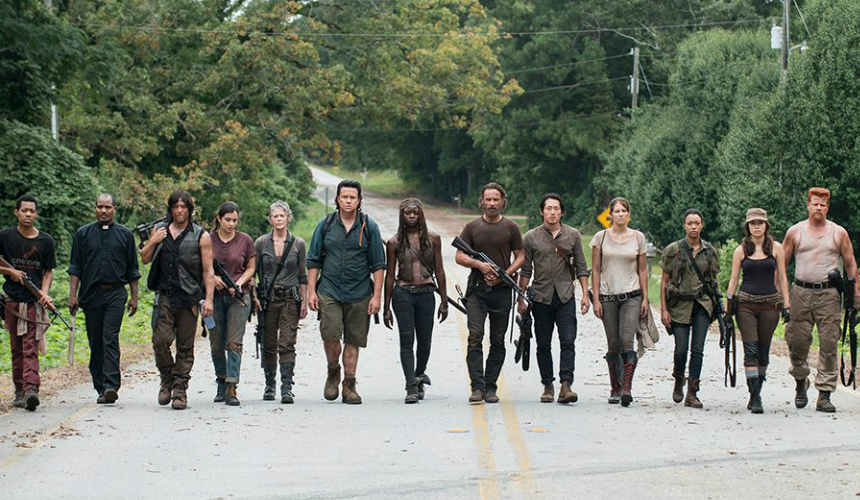
Like other zombie media, The Walking Dead uses the apocalypse as a metaphor. In this case, it’s used to discuss trauma. However, unlike its predecessors, The Walking Dead focuses almost exclusively on human violence. In later seasons, zombies are often little more than scenery.
Beating a Dead Corpse
The next nine years saw an influx of zombie media, including zombie songs, movies, television shows, and web series. With each twist on the genre, audiences were increasingly primed for zombie protagonists, and then came Warm Bodies. Warm Bodies, based on the 2010 book by Isaac Marion, released in 2013. The film stars Nicholas Hoult as R, a zombie with a conscience. This marks an interesting twist in zombie lore. Like “Re: Your Brains,” Warm Bodies is told from the perspective of the undead. And like Twilight, it features a love story between a woman and a monster. What had been unthinkable only a few years before was now commonplace. Zombie love stories were the newest craze.
A few years later came iZombie, a zombie detective show. The Santa Clarita Diet, a zombie sitcom, starring Drew Barrymore and Timothy Olyphant, premiered in 2017. The undead were mainstream, and they no longer represented an existential threat. Instead, zombie media focused on the difficulties of everyday zombie life. The walking dead weren’t monsters; they were people, with wants and needs. These shows weren’t interested in monster-hood, but instead decided to explore inclusion and understanding under the guise of a zombie story.
Some shows and movies still focused on the zombie apocalypse, but with mixed results. In 2013, World War Z (based on another Max Brooks book) took very little inspiration from its source material and debuted to lukewarm reviews. Meanwhile, 2017’s zombie Christmas musical, Anna and the Apocalypse, failed to break the box office top 20. Mad Max: Fury Road proved that audiences were still hungry for post-apocalyptic fare, but interest in zombie media seemed to be waning. And it was in this climate that the sequel to Zombieland was finally announced.
10 Years Later
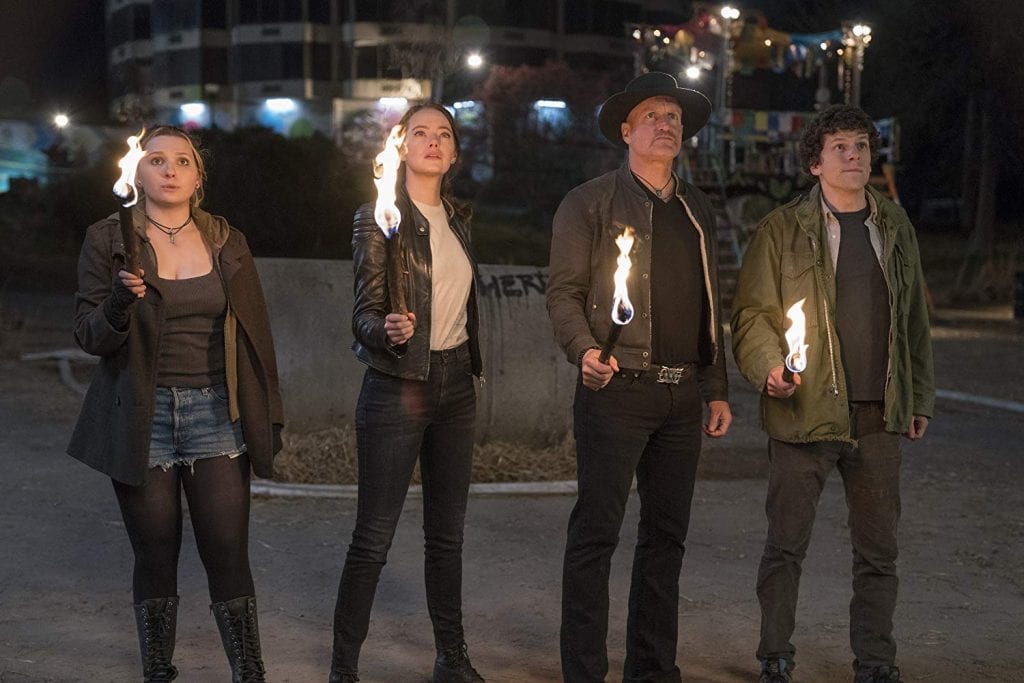
Zombieland: Double Tap was going to be a risky venture at the best of times. Sequels, especially those with extended downtime between films, often find it hard to match the tone of the original while addressing current trends. Movies like Zoolander 2 and Dumb and Dumberer traded on nostalgia but failed to bring anything new to audiences. Unfortunately, Zombieland: Double Tap falls into the same trap.
The movie tries to recapture the magic of the original without considering the circumstances that made it successful in the first place. Zombieland was a product of its time, released amidst the post-Twilight backlash, when audiences were hungry for biting sarcasm and mindless cartoon violence.
Ten years have passed in the world of Zombieland, but the apocalypse hasn’t changed at all. The characters carry the same old baggage, and zombies are just as irrelevant as they were in the original. The movie has a lot of problems with characterization, tone, and pacing. But the biggest problem is that it feels tired. Zombieland 2 is a retread of the original, but with less imagination and charm. Also, there are no Twinkies. Not a single one.
At its core, Zombieland is a power fantasy, and therein lies the problem. What the sequel fails to understand is that, for many, the apocalypse isn’t fantasy anymore. With the threat of climate change looming over us, it’s hard for some to view the end of the world with anything but dread. Zombieland: Double Tap seems to have been conceived in a vacuum, with the creators unaware of the changing times. It may have worked in 2009, but in 2019, many are looking for a different kind of catharsis. To make matters worse, only a few months ago, a far more timely zombie movie hit theaters: The Dead Don’t Die.
This is Going to End Badly
The Dead Don’t Die is a 2019 film written and directed by Jim Jarmusch. Bill Murray, Adam Driver, and Chloe Sevigny star as small-town police officers slowly but surely swept up in the zombie apocalypse. The film’s greatest asset is the tone, a detached ennui, which is present in many of Jarmusch’s movies, but works especially well here. The Dead Don’t Die is almost dreamlike, filled with meta humor and bizarre character and plot choices. These elements might make for a silly watch, but the underlying message is fatalistic. No matter what fantastical events appear on-screen, audiences are assured from minute one that the movie is going to end badly.
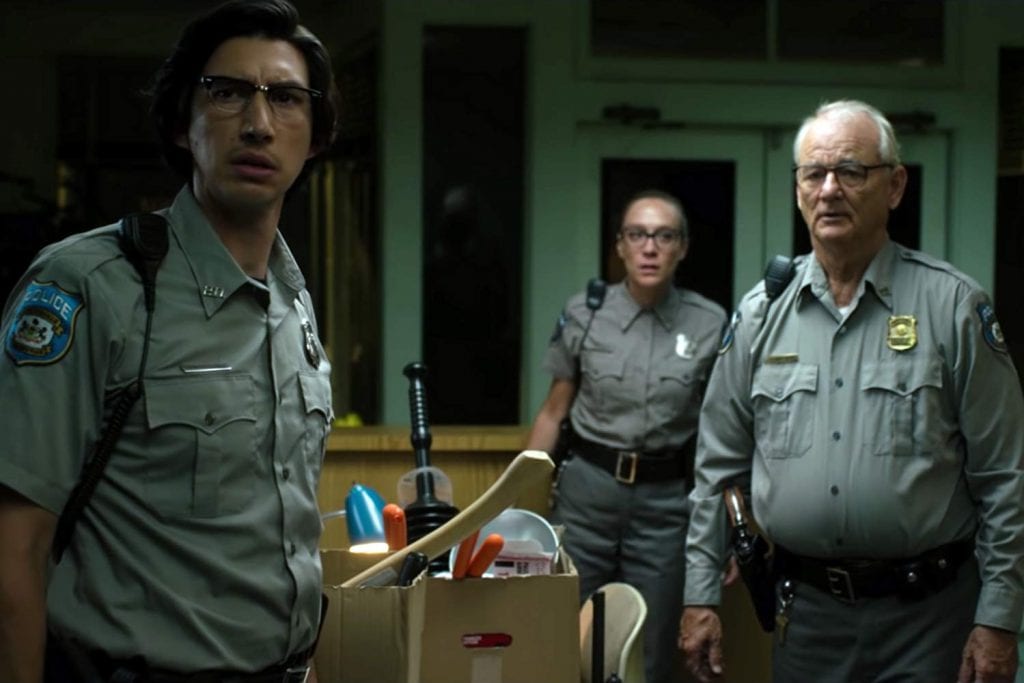
This is the apocalypse of 2019. Slow, steady, ludicrous, and inevitable. There’s no “Zombie Kill of the Week,” no monster truck battles, no rules to survive the apocalypse. There are just people who come up against overwhelming odds and do the best they can to survive.
In 2009, audiences were happy to escape into the apocalypse. Now, that threat is all too real, and it’s not very fun to imagine anymore. The Dead Don’t Die proves that it’s possible to address current concerns without sacrificing a fun moviegoing experience. The film oozes personality. Adam Driver, Bill Murray, and Chloe Sevigny all give heart-wrenchingly sweet performances. And movie fans will enjoy turns from Steve Buscemi, Danny Glover, and Tom Waits.
This film, more than any other in the zombie oeuvre, feels like a successor to Night of the Living Dead. Except, in The Dead Don’t Die, the zombie apocalypse doesn’t last a single night. It lasts, quite possibly, forever.
Final Thoughts
As the times change, so too do our fears, and zombie media has played an integral role in identifying and addressing those fears. Thanks to movies like Dawn of the Dead and 28 Days Later, zombie films have become synonymous with post-apocalyptic narratives. This lends even more weight to the genre.
Our changing zombie media reflects changing attitudes. Where once zombies were to be feared, now many shows and movies aim to bridge the gap between humanity and monster-hood. Now more than ever, zombies are multi-dimensional and multi-purpose, sometimes intended to elicit fear, and other times, a hearty chuckle. In this day and age, a zombie story can be an allegory for almost anything. Fido used the format to satirize insincere depictions of the idyllic 1950’s. Meanwhile, Warm Bodies structured its story on Romeo and Juliet, showcasing how the misunderstood are often othered to the point of monster-hood.
What a zombie story absolutely should not be is meaningless. Zombieland: Double Tap doesn’t have anything to say about our society or our fears or even our desires. It’s a movie that feels completely out of touch in an age when we desperately need some comfort, or at least vindication. Zombieland: Double Tap offers neither of these things. Instead, it opts for tired jokes and easy resolutions. It’s 2019, and we deserve better.
Luckily, a new monster movie is always right around the corner. While Zombieland: Double Tap may have been a miss, gems like The Dead Don’t Die will continue to find cult success. It may be time to retire the post-apocalyptic romp, but hopefully, this will make room for smaller, more thought-provoking pieces. Zombies play an important role in our media, and the more we understand the subtext of zombie films, books, songs, and television shows, the more we understand ourselves.



